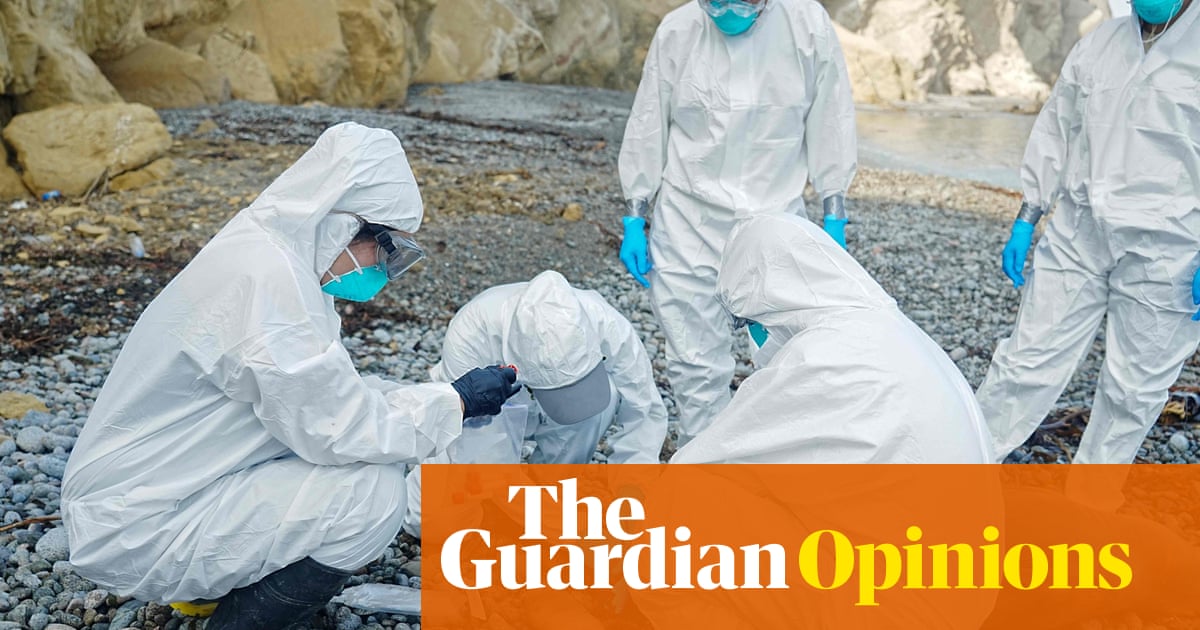
Last month a pet dog in Canada died of H5N1, also known as bird flu, after eating a wild goose. Worryingly this follows a pattern, with an increasing number of bird flu cases appearing in mammals who come into contact with an infected bird, dead or alive.
When you see a wild bird such as a duck or seagull, think bird flu. Because it’s actually more likely than not they’re infected with the virus. And many species of wild birds are asymptomatic, meaning that they don’t show any symptoms. The risk of transmission to pets is low, but they can get sick from chewing or eating an infected bird, whether it’s dead or alive.
I first wrote about bird flu in November, when domestic birds in Britain were put into an indoor lockdown. The virus had become endemic in most wild bird populations. It’s incredibly infectious, where one bird could infect as many as 100 others. When infected wild birds encountered domestic birds (such as by flying over and defecating on them underneath), huge problems emerged. Avian flu has a near 100% fatality rate in most poultry, which led to shortages of not only turkey for Christmas but also eggs, as farm after farm was decimated by the disease.
Since November, the signals emerging across the world continue to be worrying. In January and February this year, more than 3,000 sea lions died of bird flu in Peru (where the death toll in wild birds reached an estimated 50,000). In Russia, 700 Caspian seals died. Then several dolphins in Britain and the US died of H5N1. Normally, even if an animal catches H5N1 from a bird, it can’t pass it to other mammals. This limits its spread. But the large number of cases in these outbreaks suggest the possibility of mammal-to-mammal transmission, although this hasn’t been confirmed yet by genetic sequencing. A more likely hypothesis is that these outbreaks are groups of animals feeding on infected birds. It is not yet 100% clear what’s happening.
But the risk of spread among mammals is ever-present. A new research pre-print from Canada showed that H5N1 samples could spread efficiently between ferrets with fatal outcomes. In order to spread efficiently to humans, H5 would need three major categories of genetic changes, according to bird flu expert Prof Richard Webby. So far, the virus has been able to make one of these changes, but not the other two. So right now, H5N1 is a theoretical risk for the next human pandemic, rather than one requiring urgency in response today. And a prime minister or health secretary might say, “Why prepare for something that might never happen?”
To those of us scientists working in global health, there are enough concerning signals that action should already be happening. So that if a certain set of mutations do occur and we see an outbreak in humans in Peru or China or Britain, that the harm it could cause is minimal. This is a disease with an estimated 50-60% fatality rate in humans, including children.
The cornerstone of infectious disease preparedness is in: surveillance (to know what strain is spreading and where in birds); testing (to identify disease quickly in humans); vaccines (for protection against disease and death); and antivirals (to improve clinical outcomes). The US government is already moving in this direction. Rebecca Katz, professor at Georgetown University Medical Center, has noted that a H5 candidate vaccine virus recently produced by the US Centers for Disease Control and Prevention is likely to provide good protection against the circulating H5N1 viruses.
The information has been shared with vaccine manufacturers to start the process of stockpiling adequate doses. But this is a challenge because most influenza vaccines are created by incubating doses in chicken eggs (called egg-based production). If bird flu has killed off many of the chickens, then egg shortages are likely. There’s another H5N1 vaccine which is non-egg based, but they could have a maximum of 150m doses ready within six months. The world’s population is almost 8 billion.
In addition, the FDA-approved antiviral treatments for seasonal influenza could also work against bird flu. But again, getting doses to all parts of the world is a challenge given shortages. Preparation must also involve appropriate PPE for healthcare workers to protect against a respiratory disease (flu) and diagnostics to quickly identify if someone is infectious in hospitals.
All of these issues are solvable with precise planning, collaboration across countries, scientific ingenuity and good leadership. With post Covid-19 fatigue, the bigger problem is bringing the public along and communicating the facts so that they are trusted and believed. With so much – often understandable – mistrust in our current political leadership, authorities like chief medical officers and independent government advisers become crucial.
At the moment most governments aren’t paying attention to bird flu: they’re more interested in another AI (artificial intelligence) rather than this AI (avian influenza), but the avian influenza threat is real, and needs much more immediate attention and preparation.
Devi Sridhar is chair of global public health at the University of Edinburgh












